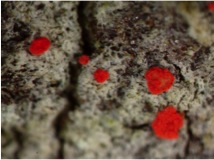NYBG Scientists Travel the World for New Species
Posted in Science on June 5 2012, by Matt Newman
 For all of our scientific advances–our satellite imaging systems and mapped genomes–the realm of botany is still a field explorer’s game. As often as there are microscopes and lab coats, there are more muddied hiking boots, cans of bug spray, and long days spent trekking through unforgiving wilderness in search of that next spirited discovery. But above all, there are discoveries yet to be made in this increasingly small world, and the Garden’s science team is on the hunt.
For all of our scientific advances–our satellite imaging systems and mapped genomes–the realm of botany is still a field explorer’s game. As often as there are microscopes and lab coats, there are more muddied hiking boots, cans of bug spray, and long days spent trekking through unforgiving wilderness in search of that next spirited discovery. But above all, there are discoveries yet to be made in this increasingly small world, and the Garden’s science team is on the hunt.
In the last year, as with every year, NYBG scientists have spent days, weeks, and months wandering the globe in the search for undiscovered plant species, working to bring our understanding of the world around us just a little closer to complete. And they’re getting the job done. The last 12 months brought to light 81 new plant and fungi species described to science by our experts, found from the jungles of Southeast Asia to the Great Smoky Mountains of North Carolina. In addition to these 81, the findings resulted in two new plant orders and four new genera. That’s not exactly pocket change when it comes to science news.

In Vietnam, research previously held off by decades of war and isolation found its way through, and came back with a discovery thought to have already been made. It was in 2008 that Dr. Andrew Henderson first described the endemic palm used to make the familiar, conical hats traditionally worn by some Vietnamese. This plant was first assigned to the Licuala genus, owing to its similarities to others in the group. But a return to the palm’s DNA in 2011 revealed it as one of several plants found that constitute an entirely new genus.
Licuala centralis was renamed Lanonia centralis after the Vietnamese words for plants in this group: la non, or “hat palm.”
Closer to home, Dr. James Lendemer and his colleagues completely upended the lichen scene of the Great Smoky Mountains National Park in North Carolina and Tennessee, unearthing 15 new species and increasing the park’s catalog of recorded lichen by 60%. This is a starting point in working to save lichen that may be threatened now or in the future. “Without a name, a species can’t be saved,” said Dr. Lendemer. “Giving a species a name inserts it into a dialog, but if you don’t describe it, you can’t have that dialog.”

In Brazil, Dr. Benjamin Torke uncovered five new species of tropical Swartzia, while Dr. Paola Pedraza tackled seven blueberry relatives in Colombia. Five Southeast Asian mushrooms made their way under Dr. Roy Halling’s magnifying glass. Further west, Dr. Lawrence Kelly and co. chalked up a new oak species in Mexico, and Dr. Dennis Stevenson found a touchstone of ancient history in a new breed of cycad. Each significant discovery is part of a broader effort to benefit not only science, but the World Flora project, an agreement between the Garden and three renowned fellow botanical institutions to create the first exhaustive online catalog of plants by the year 2020.
These 81 new species will become part of a database spanning over 400,000 currently described, in a push not only to educate us about their existence, but to benefit their preservation.
“This impressive collection of new species from around the world that Garden scientists discovered and described in just one year is a testament of their dedication to one of our central goals–finding and cataloging all of the plant life on Earth,” said Dr. James Miller, the Garden’s Dean and Vice President for Science. “A significant percentage of plant species are in serious decline, and probably a large number of them are species we haven’t even discovered yet,” he added. “We’re working as quickly and as efficiently as we can to catalog these species, but it’s a race against time.”


What an outstanding job the team at the NYBG are doing, and on one of the most urgent and noble missions: Finding and cataloging all of the plant life on Earth. Congratulations and keep the good work.